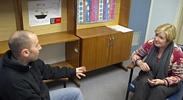|
|
 Acne (1,500) Acne (1,500)
 Addictions (1,500) Addictions (1,500)
 Advice (1,500) Advice (1,500)
 Allergies (1,092) Allergies (1,092)
 Alternative Medicine (1,500) Alternative Medicine (1,500)
 Anti Aging (1,500) Anti Aging (1,500)
 Breakup (1,500) Breakup (1,500)
 Cancer (1,499) Cancer (1,499)
 Dental Care (1,500) Dental Care (1,500)
 Disabilities (1,500) Disabilities (1,500)
 Divorce (1,500) Divorce (1,500)
 Elderly Care (1,498) Elderly Care (1,498)
 Goal Setting (1,500) Goal Setting (1,500)
 Hair Loss (1,500) Hair Loss (1,500)
 Health and Safety (1,497) Health and Safety (1,497)
 Hearing (1,500) Hearing (1,500)
 Law of Attraction (1,499) Law of Attraction (1,499)
 Marriage (1,500) Marriage (1,500)
 Medicine (1,497) Medicine (1,497)
 Meditation (1,499) Meditation (1,499)
 Men's Health (1,500) Men's Health (1,500)
 Mental Health (1,500) Mental Health (1,500)
 Motivational (1,500) Motivational (1,500)
 Nutrition (1,495) Nutrition (1,495)
 Personal Injury (1,499) Personal Injury (1,499)
 Plastic Surgeries (1,500) Plastic Surgeries (1,500)
 Pregnancy (1,496) Pregnancy (1,496)
 Psychology (1,500) Psychology (1,500)
 Public Speaking (1,500) Public Speaking (1,500)
 Quit Smoking (1,500) Quit Smoking (1,500)
 Religion (1,499) Religion (1,499)
 Self Help (1,500) Self Help (1,500)
 Skin Care (1,500) Skin Care (1,500)
 Sleep (1,500) Sleep (1,500)
 Stress Management (1,500) Stress Management (1,500)
 Teenagers (1,492) Teenagers (1,492)
 Time Management (1,500) Time Management (1,500)
 Weddings (1,500) Weddings (1,500)
 Wellness (1,500) Wellness (1,500)
 Women's Health (1,500) Women's Health (1,500)
 Women's Issues (1,500) Women's Issues (1,500)
|
Be diligent in identifying if your elder relative or friend is suffering from bed sores, because sepis infection often develops from untreated bed sores when the conditions permitting the bed sores persist. Look for signs of bedsores as follows: - Stage 1—characterized by skin surface reddening, not unlike a light sunburn. A Stage 1 wound is an early warning of a problem. If caught this early, and if preventive action is taken immediately, the ulcer will likely go away.
- Stage 2—characterized by a broken or unbroken blister, which means that the skin is now injured.
- Stage 3—the wound has become deep, affecting all of the layers of the skin. The wound progresses rapidly to Stage 4 if not treated aggressively and immediately.
- Stage 4—the wound has gone beyond the skin, infecting muscles, tendons, and bones. The depth of the wound is more of a threat at this stage than the size of it. If large enough, surgical removal of the necrotic or decayed tissue is often necessary as well as antibiotic therapy. In more serious cases, amputation may be necessary.
Prevention and treatmentSince the elderly often spend many hours in a wheelchair or in a bed, it is critical to the prevention of bed sores that the patient be turned regularly and that bed linens be changed frequently. Other than physically turning the patient, here are more steps you can take to prevent the development or worsening of bed sores: - Alleviate direct pressure
- Manage overall nutritional status
- Increase vitamin C and protein intake
- Ensure adequate fluid intake
- Diffuse pressure points with air mattress overlays
- Use lotions or emollients to hydrate surrounding tissues
- Use padding, air mattresses and protective substances to decrease pressure
- Use coverings to insulate, absorb, and protect
If you harbor suspicions that a loved one has been victimized by a negligent elder care facility, bring this up to managment of the nursing home facility.
|
|
|



